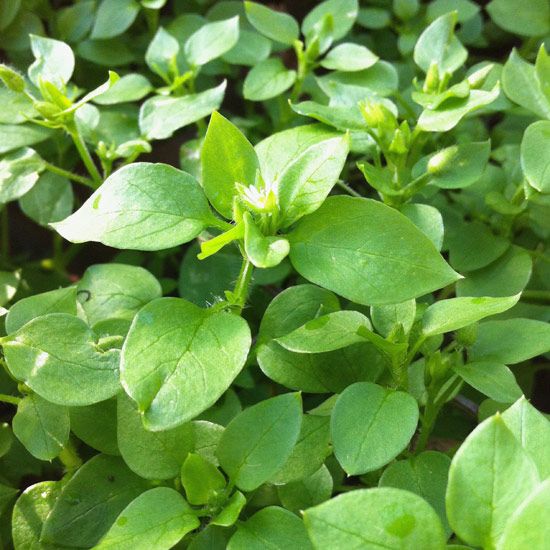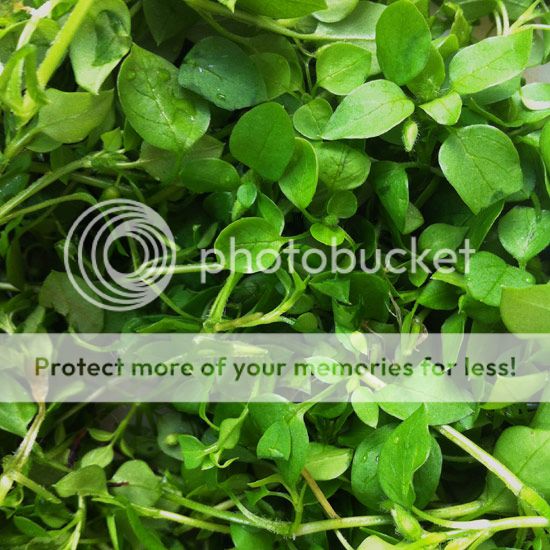
Chickweed growing in my garden. A seasonal weed, it is abundant during Winter coming into flower in late Winter, before dying off in Spring.

Clockwise from top left: typical growth - note the pointed leaf tips and alternating leaf pairs along the stem, in bud, section of plant with some roots, in flower like a tiny daisy.
Forage harvesting can be done in one of two ways. If you have the time and have an abundance of chickweed, you could weed it out of the places you don't want it and snip off the best tendrils from the root hub. Or, if you can't be bothered with that, just snip off what you need from the plant. The snipping method is also cleaner because you aren't disturbing any soil.

Roughly chopped chickweed. While edible in lengths it's more palatable roughly chopped, and easier to stir through food.
After washing and draining, tip harvest into a pile on chopping board.
Make a some cuts across the pile in two directions to roughly chop it. You're are aiming to reduce the tendril lengths rather than end up with something finely chopped. It isn't necessary to be precise. That said, you might prefer a fine chop for your dish.
Use as you would spinach or any other greenery in its cooked form. I have it sautéed with garlic chives or garlic, wilted as an accompaniment to poached eggs, mixed into scrambled egg mixture, in curry, stir fried, wilted with pasta and pesto and a baked potato. The entire plant stems, flowers, and buds is fine to eat, but raw, only the fingernail-sized leaves are recommended and that is waaay too much mucking about for me!
No comments:
Post a Comment